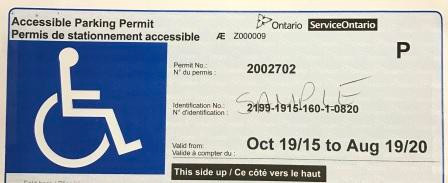The New Deal Forum Digital Task Force has brought out a report proposing Policies to Increase Broadband Access for All in the US. The report outlines the gapping problem in internet penetration across urban and rural America.
The task force is co-chaired by Garlin Gilchrist II, the lieutenant governor of Michigan, Sam Liccardo, the mayor of San Jose, California and Loranne Ausley, the senator from Tallahassee, Florida.
The NewDEAL Forum is a Washington-DC based non-profit organization which identifies and promotes future-oriented state and local pro-growth progressive policies that can improve the lives of all Americans. By facilitating the identification and spread of innovative policy ideas, the NewDEAL Forum seeks to foster economic growth, reduce barriers to opportunity, and promote good government in communities, cities, and states throughout the country.
Here are some excerpts from the report, which have scores of case studies to accompany with:
Improving Mapping & Data Collection
Current broadband data does not deliver an accurate picture of where households lack connectivity, and does not measure the impact of affordability and other obstacles besides physical access to a broadband connection. Congress passed the Broadband Data Act in 2020 to begin to address these issues by requiring all broadband providers to report more granular data and the FCC to collect and use the data for broadband maps to guide funding.
This act is still yet to be implemented, however, and even after implementation, it will still result in our reliance on self-reporting by carriers and providers. The Act also does not require address-level data, nor data on price, speed, or outage. With the leadership of Chair Jessica Rosenworcel, the FCC is finally undertaking a massive effort to revise its maps, but outside input is needed to guide data collection to promote equity.
Policymakers need information about affordability, reliability, and inequities in access to make sound decisions about broadband investments for their communities. State and local elected officials can collect local-level data and create their own maps for their areas. These efforts also create opportunities to collect precise data on speed and pricing, and to overlay that with demographic information to identify gaps and where to focus funding and resources.
Elevating Digital Equity
At the core of the digital divide is an important fact for policymakers to consider for each topic in this report: lack of broadband access disproportionately impacts individuals and families of color and those whose incomes are below the federal poverty threshold. According to existing research, just 71% of Black and 65% of Hispanic adults have home broadband compared to 80% of white adults. Similarly, over 30% of Black and Hispanic adults do not own a desktop or laptop computer.
The lack of internet access can negatively impact health outcomes, employment opportunities, and education attainment. The divide is exacerbated by digital redlining, such as the prevalence of upgrades in affluent neighbourhoods and by unconscious biases, for instance, expecting students to have access to high-speed internet at home. In data mapping and in all issues related to expanding access to broadband service, it is essential for officials to identify and reform the policies and investments that create or maintain inequities and ensure that all citizens have equal access to broadband.
For many rural communities, connecting households to the internet presents a unique set of challenges. The cost of extending networks to rural households is often much higher, which is a major reason that some rural areas remain unconnected. Often, other obstacles arise as well: rural households may be physically more difficult to connect due to terrain or because of property rights that make it challenging to lay fiber or other required infrastructure.
Federal Highlight
As part of the Bipartisan Infrastructure Law, Congress and President Biden have approved a historic $65 billion investment in expanding broadband access, including $42.5 billion for broadband deployment, $14.2 billion for the Affordable Connectivity Program (ACP), and $2.75 for digital equity programs. The ACP replaces the short-term Emergency Broadband Benefit and provides a long-term assistance program with a $30-$75 monthly stipend available to help qualified families to pay for home internet service.
Through the Broadband Equity, Access, and Deployment Program, each state will receive an initial $100 million grant to develop a 5-year plan to identify their needs and how funds will be utilized. The remaining funding will be allocated by a formula that factors in the number of unserved and high-cost locations as determined by the FCC’s broadband data maps. The law requires states to prioritize funds to provide reliable high-speed internet to all unserved locations, many of which are rural communities, with additional funds available to support projects in underserved areas, followed by community organization, such as schools and libraries.
Innovating to Address Affordability and Adoption
The quality of existing and new broadband infrastructure only matters if people have the means to connect to it. COVID has exacerbated existing barriers, as families and students quarantining at home struggled to remain connected to school, services, and work. A 2020 study by All4Ed found that 16.9 million children didn’t have high-speed home internet before the pandemic, and 7.3 million children didn’t have a desktop, laptop, or tablet computer. According to EducationSuperHighway, 18 million unconnected households, or 47 million people, have access to internet service but cannot afford to connect. As the organization notes, disconnected families and individuals often are unaware of what’s available, do not trust in the government and providers, and have difficulty enrolling in programs. Targeted investments based on data and in partnership with trusted community groups are necessary to help overcome these barriers and reach disconnected families and students.
Promoting Digital Skills
Increasing access and connectivity to broadband is not enough to ensure individuals are fully utilizing the internet to meet their personal and professional goals. As more and more aspects of jobs and everyday life move online, it is essential that resources be made available to help individuals gain the digital fluency and skills needed to navigate current and future technologies. A report by the U.S. Department of Education found that over 32 million adults lack basic digital skills, such as using basic computer commands and input and output devices and the ability to think critically about electronic texts and data. The skills gap cuts across generations, with nearly 58% of millennials lacking digital problem-solving abilities. While many white adults lack these abilities, the need for training is more concentrated in communities of color: 22% of all Black adults and 35% of all Hispanic adults currently need digital skills training. Training programs should prioritize targeted programming to reach communities of color by partnering with community groups equipped to understand the varied needs of this population. These skills are essential, as they are an on-ramp to workforce development as well as the ability to use broadband for things like healthcare, entrepreneurship, and more.
Digital Navigator Programs
According to Digital US, fewer than 10% of adults who need additional digital skills are accessing training. While leaders are making historic investments in expanding access to broadband, many families with home internet are not ultimately utilizing it to address their needs. This is caused in part by a lack of access to adequate devices and the absence of available, high-quality training programs. Further complicating the issue, over half of Americans have reported being uncomfortable using technology to learn.
Leading a diverse coalition of partners, Digital US designed the digital navigator program with funding from Walmart to train staff and volunteers to support learners by providing just-in-time, individualized support for accessing devices, navigating the internet, and teaching other relevant digital skills, with f lexible options to participate. The program is designed to be easily replicated and scalable, and Digital US and their partner, the National Digital Inclusion Alliance (NDIA) published best practices and additional resources to help establish new programs or strengthen existing ones.
Increasing Access through Telehealth
What largely started out as a way to better serve rural communities, telehealth has developed into an essential lifeline for many during the pandemic. The rapid growth in use of telehealth (38 times higher than pre-pandemic use) is breaking down barriers and increasing access to care for many, including those impacted by transportation, work, and childcare constraints. Practitioners have seen more people taking advantage of their healthcare benefits, leading to better health outcomes such as early disease diagnosis, fewer missed appointments, and more consistent adherence to treatments. Concerns remain about how to ensure fairness in costs, access, and quality of services so that these improved outcomes can be felt equitably across the country.
Source:






Comments